What is Advanced Brainwave Entrainment Technology, Anyway?
Go behind the scenes of brainwave entrainment technology creation with Joseph Kao, developer of the extraordinary meditation tool Journey to the Center of the Self. Here, in an interview with John Dupuy, CEO of iAwake Technologies, Joe describes the amazing complexity of the brainwave entraining soundscape he created to both accompany his deeply inductive, 30-minute, guided meditation on the first track of Journey, and also stand alone as a music-only track that holds you in a profoundly relaxed, still, yet clear place on the theta/delta border. To find out all that went into the making of the inductive guided meditation on the first track of Journey, see A Guide to Transpersonal Meditation: Journey to the Center of the Self, part I of this interview.
“I’ve been drawn to working with this kind of technology for years and years—I had a light and sound machine when I was fifteen or sixteen… a magazine in school advertised this blinking light and sound machine, and it was love at first sight.”– Joseph Kao
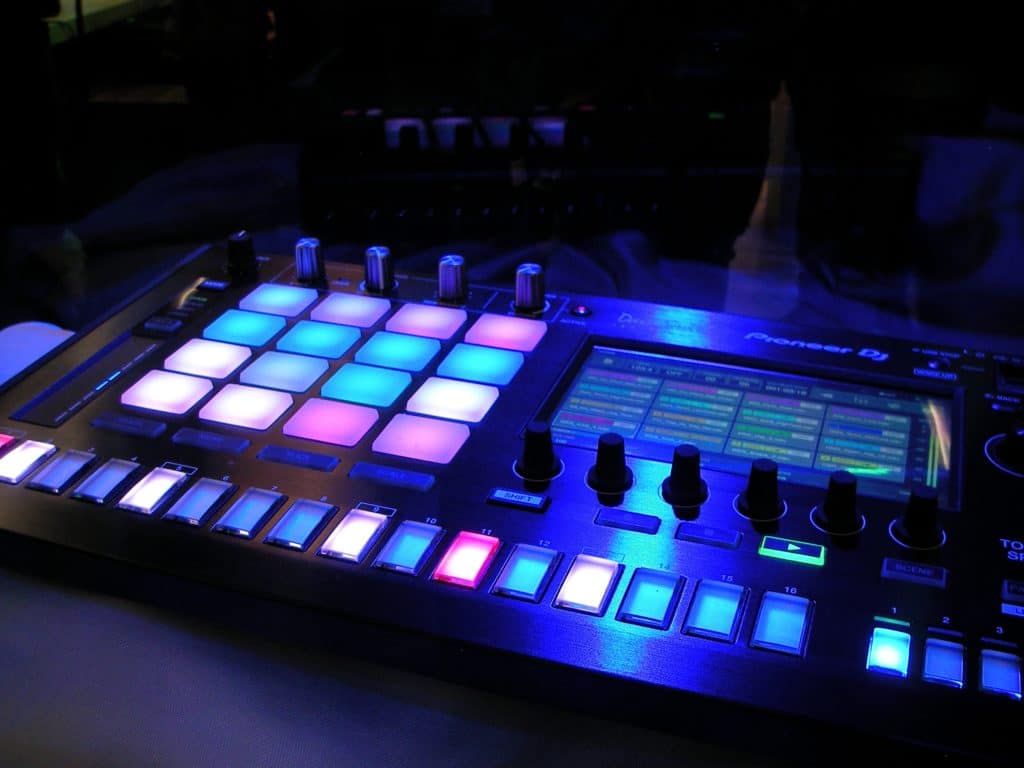 John: Joe, tell us about the music you created for Journey—what brainwave states the tracks entrain to, and what kind of entrainment technology you used.
John: Joe, tell us about the music you created for Journey—what brainwave states the tracks entrain to, and what kind of entrainment technology you used.
Joe: The Journey soundscape took a lot of work. I wanted to bring in the very best of what I knew about brainwave entrainment and to make the best brainwave entrainment product—with the best entrainment technology—that I possibly could. So, there are all sorts of things going on in Journey to provide a sound bed to support the experience of expansiveness and also communicate elements of the heart-based work I talked about earlier. (See part I of this interview, A Guide to Transpersonal Meditation.)
Drone sounds, time-stretched sounds, shifting sounds… binaural beats
There’s an aesthetic element to the music and there are a lot of drone-based sounds and time-stretched sounds, deep, rich bass sounds—there’s a spectrum of sounds within there—and what’s more, there’s a load of 3D processing that goes on to ensure that the mind doesn’t become habituated to them. There’s also a constant, subtle sense, a slow and gradual sense, of the sounds shifting around. And, there are layers of binaural beats.
The most profound results I’ve had have been through combining brainwave entrainment technology that promotes clarity and heightened awareness, particularly gamma-based tracks, simultaneously with deep theta-delta meditation, so that you bring clarity into the stillness, into the deep, profound relaxation—absolute focused clarity.
 On Journey to the Center of the Self, there’s a lot of focus on deep 4 Hz (four cycles a second) brain waves on the theta-delta border, which is generally associated with profound meditation states and shamanic states. The drumbeat of the shaman’s drum can certainly be around that rhythm.
On Journey to the Center of the Self, there’s a lot of focus on deep 4 Hz (four cycles a second) brain waves on the theta-delta border, which is generally associated with profound meditation states and shamanic states. The drumbeat of the shaman’s drum can certainly be around that rhythm.
So, there’s the deep stuff here, and then there’s the gamma stuff, too. There’s a little bit of 80 Hz, but it’s primarily a 40-Hz gamma track, gamma frequencies that are combined with a pulse, on and off, throughout the recording. I went to some lengths to make this as rich and potent as I could, whilst blending it into the sound of the music. There are these really rich, kind of cat-purr-like vibrations that come through at times, combined with the lulling, deeply relaxing theta brain waves.
Entrainment technology combining gamma vibrations with relaxing theta brain waves
So that’s done through binaural beats. That’s done through amplitude modulated sounds. A lot of the track pulses in almost imperceptible ways—pulsing and vibrating might be a better
way of describing it—at both theta brainwave frequencies. And then there are also 40-Hz gamma frequencies, the frequency that came through a lot when the Dalai Lama sent some Buddhist monks to have their brain waves studied as they were meditating and doing loving-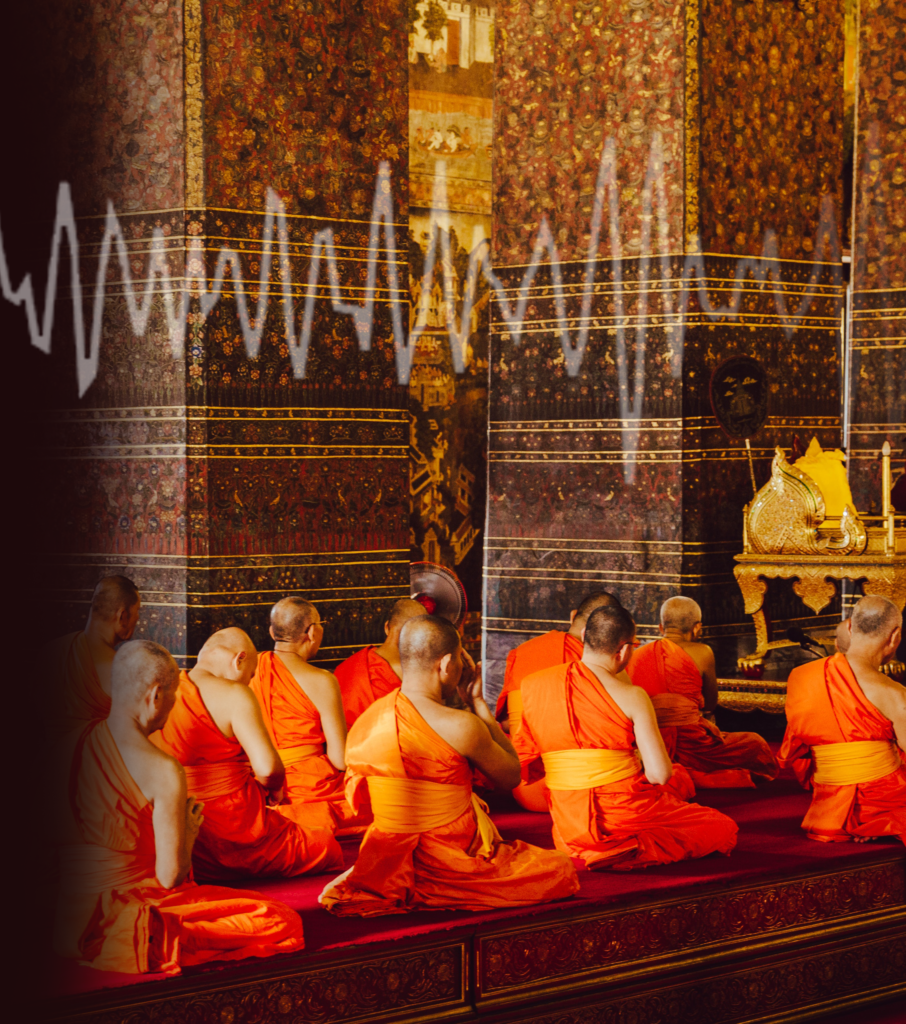 kindness practices. Gamma is associated both with heightened awareness and also with loving-kindness practices, metta practices.
kindness practices. Gamma is associated both with heightened awareness and also with loving-kindness practices, metta practices.
There’s also some new stuff I’ve certainly never included in tracks before including some gentle pink noise and brown noise blended together in the background with what’s called phase modulation. This is almost outside of awareness as you’re listening to it. This is how your ear tells what direction a sound is coming from. Does it arrive at your left ear slightly before your right ear? You can modulate that. So, again, it has a very gentle, imperceptible rhythmic quality to it.
Hey, even before we spoke about creating Journey, I was thinking about how people across the world do their spiritual practices and the commonalities between them all. I was thinking, there is the path of stillness—which links right back to what we were talking about getting to a state of deep, profound relaxation and bringing clarity into stillness. Then there’s the path of rhythm, of rocking, of dancing. But there’s always a rhythm to it—even in the movements of Tai Chi, there’s a smoothness, a smooth rhythm. What it never is, is arrhythmic—those are the movements of a more anxious, frightened animal kind of thing.
 So, what we’re doing is combining these two parts, the awakening of complete stillness and deep relaxation with the rhythmic sounds, and embedding all frequencies within the music from right at the upper limits of human hearing to the lower limits. There is multi-level entrainment within Journey—I’ve layered in everything I know about audio brainwave entrainment into this track.
So, what we’re doing is combining these two parts, the awakening of complete stillness and deep relaxation with the rhythmic sounds, and embedding all frequencies within the music from right at the upper limits of human hearing to the lower limits. There is multi-level entrainment within Journey—I’ve layered in everything I know about audio brainwave entrainment into this track.
I’m very proud of it. It took 47—there really were!—iterations of the track before I sent it off to the beta testers. So, I’m really excited to be sharing it with you all.
John: Wow! Thank you, Joe. I just love your explanation here. First, it gives us a sense of the quality of your mind, and second, I love the way you’ve described how very complex the brainwave entrainment technology is that gets us into states of consciousness we can practice with, we can heal with, and we can use to wake up.
I call the kind of intuitions and inspirations that come when we meditate and do these kinds of practices my “marching orders.”Okay, this is what I need to do. We’re not using our brilliant linear minds here; that’s not the place wisdom comes from. The place of wisdom is, again, relaxing into these states with loving-kindness, and then all the stuff can come out, whether we are dealing with our shadow issues or dealing with our light issues—the wisdom and gifts we haven’t yet brought forth that need to be birthed.
We need both to be whole people—integral men and women—and to be the person we need to be in the world. After thousands and thousands of years, we’re finally beginning to understand what it takes to be a healthy, functional human being in all the essential parts. That’s what we’re working on.
Joe, thank you so much. This has been just brilliant. We have to talk about some more projects, okay?
Joe: Let’s do it, John. Yes.
See also part I of this blog, A Guide to Transpersonal Meditation, where Joe gives a fascinating account of all that went into creating the deeply inductive guided meditation on the first track of Journey to the Center of the Self.
You can listen to the full interview with Joseph Kao on YouTube here:
___________________________________________
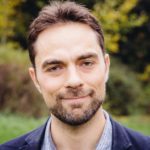 Joseph Kao, creator of Profound Releasing, Profound Renewal, and Sound Asleep, is a hypnotherapist and a solution-focused therapist with a private practice in Cambridge, UK. Joe was the co-developer of an acclaimed course on conversational hypnosis, and he regularly teaches hypnotherapy and psychotherapy to other therapists. He has also been the head scriptwriter for over 800 professional hypnotherapy recordings. Joe was drawn to the world of philosophy, meditation, and brainwave entrainment technology from an early age, and he’s had a daily meditation practice since 1998.
Joseph Kao, creator of Profound Releasing, Profound Renewal, and Sound Asleep, is a hypnotherapist and a solution-focused therapist with a private practice in Cambridge, UK. Joe was the co-developer of an acclaimed course on conversational hypnosis, and he regularly teaches hypnotherapy and psychotherapy to other therapists. He has also been the head scriptwriter for over 800 professional hypnotherapy recordings. Joe was drawn to the world of philosophy, meditation, and brainwave entrainment technology from an early age, and he’s had a daily meditation practice since 1998.
___________________________________________
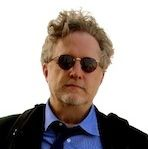
John Dupuy is the CEO of iAwake Technologies and travels internationally to teach and inspire on the subjects of Integral Recovery, Integral Transformative Practice, and the use of brainwave entrainment technology to deepen one’s meditation practice and in the treatment of addiction, depression, and PTSD. John is the founder of Integral Recovery® and his book Integral Recovery: A Revolutionary Approach to the Treatment of Alcoholism and Addiction won the 2013 USA Best Book Award. John also hosts interviews with leading innovators in the spiritual technologies field on Spiritual Technologies 2.0 Live and co-hosts the popular Journey of Integral Recovery podcast.
___________________________________________
 This blog was created from an interview with Joseph Kao, creator of iAwake’s Journey to the Center of the Self, and iAwake’s CEO John Dupuy, by Heidi Mitchell, who has been working with John for 11 years as assistant and editor. John introduced her to Integral theory and practice and brainwave entrainment enhanced meditation in 2007. Heidi is also a freelance editor of nonfiction books, blogs, and web sites. She can be reached at www.heidimitchelleditor.com.
This blog was created from an interview with Joseph Kao, creator of iAwake’s Journey to the Center of the Self, and iAwake’s CEO John Dupuy, by Heidi Mitchell, who has been working with John for 11 years as assistant and editor. John introduced her to Integral theory and practice and brainwave entrainment enhanced meditation in 2007. Heidi is also a freelance editor of nonfiction books, blogs, and web sites. She can be reached at www.heidimitchelleditor.com.
Leave your comments below
2 Comments
Leave a Comment
You must be logged in to post a comment.

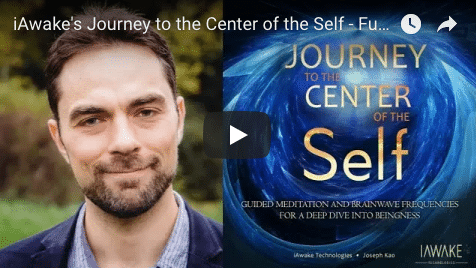
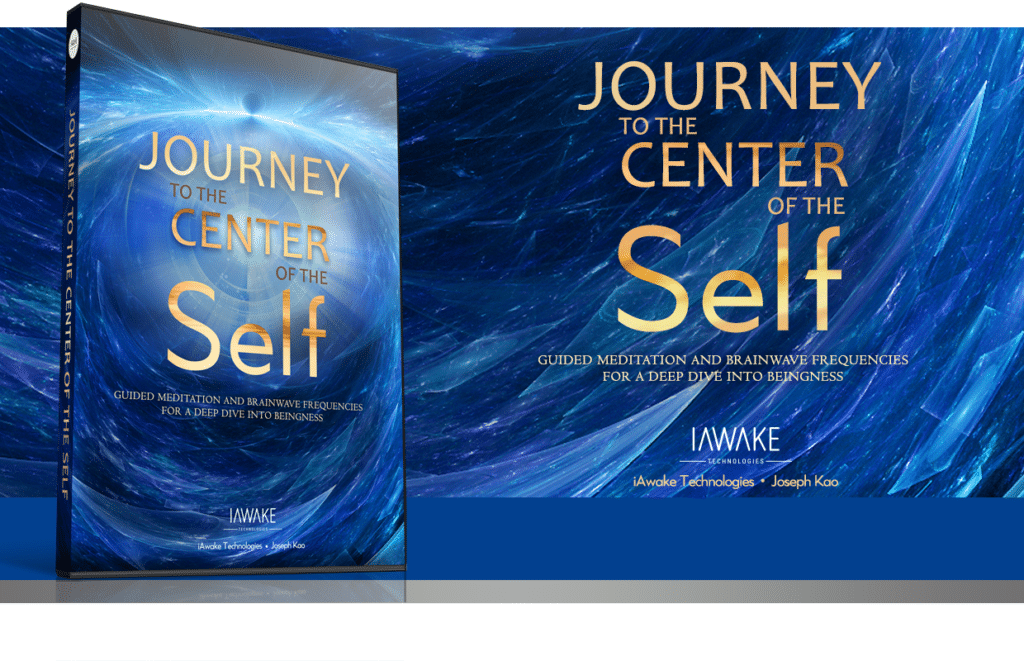
[…] technology and music in the recording of this remarkable new transpersonal meditation tool, see part II, What is Advanced Brainwave Entrainment, Anyway? which is the second half of this interview with Joseph […]
[…] and music in the recording of this exceptional new transpersonal meditation instrument, see part II, What is Advanced Brainwave Entrainment, Anyway? which is the second half of this interview with Joseph […]